Keeping It Official
For
the sake of ease, continuity and accuracy official NOAA and FAA weather
measurements are taken at airports around the nation. The Twin Cities
official weather observations are hourly snapshots at MSP International.
But
all weather, like politics, is local. This last snowstorm only brushed
the airport with .3 inches of slush; a total of 69.8 inches this winter
at MSP. But locals up in Mora, far north metro, would beg to differ.
94.2 inches of Sweet Saskatchewan Slush has piled up there this winter
season; close to the 1930-31 record of 99.5". Hayward, Wisconsin has
seen a record, jaw-dropping 108.1 inches!
At 75.5 inches St. Cloud is tied for the 5th snowiest winter on record; the 6th snowiest April, with 12 inches and counting.
I
think the heavy snow is over now. Let's tempt fate. If it snows more
than 2 inches I will personally power-wash & wax Amelia
Santaniello's minivan. There. What can go wrong.
A sudden warm
front lifts spirits into Monday; highs well into the 60s. Above average!
Watch for a late-day T-shower today - more showers possible late Easter
Sunday; again midweek.
We cool off into the 40s and 50s late next week but no more front-page-worthy mega-snows.
Trust me, I'm a weatherman.
A Springy 72 Hours.
ECMWF guidance suggests upper 60s to near 70F each of the next 3 days.
Getting to 70F will be a function of how long the sun stays out (and any
rain will keep temperatures a few degrees cooler). We cool off a bit
Tuesday; another round of potentially heavy showers and T-storms late
Wednesday into Thursday. Light jackets stage a comeback by next Friday.
Graphic: Weatherspark.
Easter Sunday National Outlook.
With the exception of cool weather over much of New England, most of
America experiences a mild Easter Sunday, even northern cities from
Minneapolis to Chicago and Detroit. Good timing on this latest warm
front. Graphic: WeatherNation TV.
7-Day Rainfall Forecast.
GFS guidance shows 1-3" amounts pushing into the Pacific Northwest,
some 3-5" rains capable of flash flooding into the weekend over Georgia,
South Carolina and the Florida Panhandle. An upper level disturbance
pushing across the Upper Midwest may drop some 1-2"+ amounts on
southeastern Minnesota and central Wisconsin late Saturday into Monday
morning. Source: NOAA and HAMweather.
Near-Record Breaking Winter Snowfall at Mora.
Yes, the official NWS measurements are taken at MSP International, but
snowfall amounts this past winter were much higher over the northern
suburbs. Case in point: Mora, where 94.2" of snow has fallen this
winter, close to the all-time record of 99.5" in 1930-31. Graph courtesy
of the Twin Cities National Weather Service
NOWdata.
Above Average Snowfall for MSP.
Normal winter snowfall, to date, at MSP International Airport is 53.8".
So far 69.8" of snow has piled up in Richfield, according to NOAA
records.
Doubly Taxing.
As if April 15 isn't tough enough. Dr.Mark Seeley has some trivia about
April 15's weather that made me do a triple-take. Here's an excerpt of
the latest edition of
WeatherTalk: "...
Tax
filing day in 2014 will likely be remembered as the coldest April 15th
in state history (or at least a rival to 1875, 1935, and 1962 as among
the coldest). Scores of Minnesota weather observers reported new record
lows for April 15th, and the National Weather Service Cooperative
weather observer at Camp Norris (Lake of the Woods County) reported a new all-time statewide low temperature for the date with a reading of -4 degrees F..."
Let's shift gears and acknowledge that the pattern is (finally) shifting into spring...
Will The Next El Nino Break A Global Temperature Record?
Not al El Ninos are created equal. The really big warm phases of ENSO,
the ones that lead to global temperature records, tend to be EP or
Eastern Pacific El Ninos. The CP (Central Pacific) warmings tend not to
have as great an influence on global temperature. Climate scientist
Simon Donner explains at
Maribo; here's an excerpt: "...
This
has important implications for the “pause” in surface warming. Over the
past 10-15 years, the easterly winds have been abnormally strong, with
few gaps sufficient to generate Kelvin waves. This is related to
decade-scale variability in the Pacific Ocean conditions, called the
Pacific Decadal Oscillation (PDO) or Interdecadal Pacific Oscillation
(IPO). It may then come as no surprise that all the El Nino events since
1998, including the 2009/10 event that made the cherries blossom early
in Vancouver, have all been of the CP variety. The same happens to be
true for other “slowdowns” in the rate of global surface temperature
change since the Industrial Revolution. This suggests the decade-scale
variability in the Pacific affects El Nino development, and in turn, the
ups and downs in the rate of human-caused global surface warming..."
Average Data Of The First Tornado Warning? Iowa Environmental Mesonet put together an
interesting graphic,
showing the average first Tor Warning, office by office. As early as
January 24 in Jackson, Mississippi, March 11 in Oklahoma City, May 2 in
Denver, May 9 in Washington D.C. and May 12 in the Twin Cities. Can we
please have a few quiet weeks between the snow and the tornadoes?
Spewing Sewage Into The Ocean Is Bad: Toxic Algae and Man-Size Jellyfish Edition. Remind me not to take a dip in the South China Sea anytime soon after reading this post from
Quartz. Here's a clip: "...
In July 2013, the biggest algal bloom ever recorded in China covered 28,900 square kilometers (11,158 square miles)
of the Yellow Sea—meaning more than three New York City metro areas of
ocean was carpeted in green muck—requiring Qingdao city officials to bulldoze 7,335 tonnes (8,085 tons)
of beached scum. A similar incident almost shut down the sailing
competition of the 2008 Beijing Olympic Games. The army dispatched
15,000 soldiers to remove 1 million tons of algae, costing more than $100 million..."
Photo credit above: "
The Red Army battling green algae." AP Photo/Ng Han Guan.
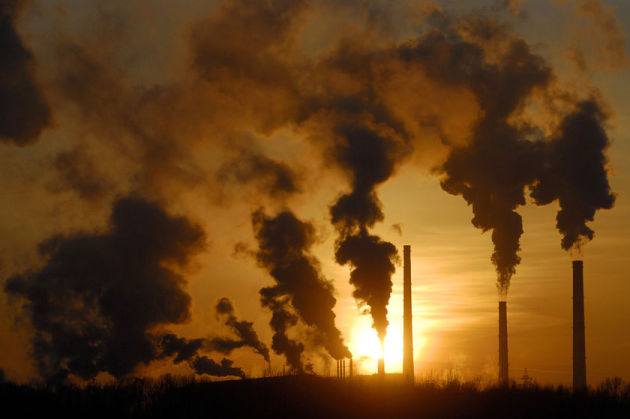
Pollution From Asia Makes Pacific Storms Stronger.
It's all about the aerosols, man-made pollutants seeding clouds and
ultimately storms hundreds, even thousands of miles downwind. Is Chinese
pollution impacting our weather? Here's a clip from
National Geographic: "...
Whether the weather [in North America] will change in a good direction or bad is hard to say at this time," says Renyi Zhang,
a professor of atmospheric sciences at Texas A&M University in
College Station. Zhang is a co-author, along with several scientists
from the U.S. and China, of a study released in the Proceedings of the National Academy of Sciences on Monday. The scientists say pollution from Asia is likely leading to stronger cyclones
in the midlatitudes of the Pacific, more precipitation, and a faster
movement of heat from the tropics toward the North Pole. As a result of
these changes, "it's almost certain that weather in the U.S. is
changing," says Zhang..."
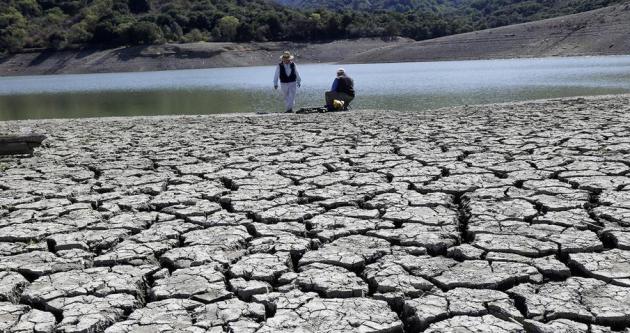
California Suffers Astonishingly Fast Snowpack Melt As Drought Intensifies.
It's going to be a long, hot, potentially fiery summer and autumn for
California and much of the Southwest. Andrew Freedman has more details
in a story at
Mashable; here's a clip: "...
Officials
already knew that the snowpack was unusually thin and would provide
below average amounts of water when it melted, considering that the
state had its third-driest winter on record, following its driest
calendar year in 2013. However, they did not anticipate it would melt so
quickly. The California state snow survey on April 1
found that the snowpack contained just 32% of the average water content
at that time of year, when snowpack typically reaches its annual peak.
This placed 2014 as among the lowest water-content years on record since
such data began in 1930..."
Photo credit above: "
The dry bed of the Stevens Creek Reservoir is seen on Thursday, March 13, 2014, in Cupertino, Calif." Image: Marcio Jose Sanchez/Associated Press.
California's Wildfire Threat Is So Severe That The Season Started Early.
Following a deepening drought and unusual heat during the winter
months, 2014 promises to be a very rough year on the wildfire front.
Here's an excerpt from
Huffington Post: "
Don’t
let the recent rains and green hillsides fool you -- the California
Department of Forestry and Fire Protection says the fresh growth is only
covering up months of dry, dead grass, putting California at risk for
one of its most severe fire seasons ever.
Warnings issued to homeowners in the state’s most wildfire-prone areas
urged them to prepare earlier than ever for the summer fire season in
light of California’s historic drought, ABC News 10 reported..."
California Drought To Push Produce Prices Higher.
AZCentral has the story; here's an excerpt: "
Drought
conditions in California's agricultural fields are going to push prices
higher for fruits and vegetables, according to a Arizona State
University study. The biggest price hikes are likely for lettuce, up 34
percent, and avocados, up 28 percent, according to Professor Timothy
Richards of W. P. Carey School of Business at ASU. "You're probably
going to see the biggest produce price increases on avocados, berries,
broccoli, grapes, lettuce, melons, peppers, tomatoes and packaged
salads," Richards said..."
* latest U.S. Drought Monitor for California is
here.
The Drought Hitting 40% of the Entire Country, in 5 Maps.
The Washington Post has the story - here's an excerpt: "...
Every
inch of five states — California, Nevada, Arizona, New Mexico and
Nebraska — are experiencing some level of drought. Much of the northern
Texas Panhandle is under extreme or exceptional drought warning, as is
most of California and parts of northern Nevada. A weekly snapshot of
drought conditions shows 21 percent of the country is experiencing
severe drought or worse; all told, 40.9 percent of the country is under
some kind of drought watch or warning...."
* latest U.S. Drought Monitor is
here.
Silver Lining.
Those piles of April slush lingering in your yard have some benefits:
they've delayed allergy season, and moisture is trending above average.
NOAA may remove the drought designation for parts of central and
southwestern Minnesota in the coming weeks if these (wetter than normal)
trends continue.
Encouraging Moisture Trends Midwest, Great Lakes & Ohio Valley. Here is the 90-day departure from normal precipitation composite, courtesy of
NOAA.
The Plains continue to dry out, along with portions of the Mid South
and Southeast, much drier than average, overall, for California.
Despite
all the public education, a staggering 84 percent of people surveyed
still believe wind, not water,is the greatest threat to their safety,
and base their evacuation decisions on wind speed or a storm’s category,
the Federal Alliance for Safe Homes said this week.
The national
Harris Interactive Survey, commissioned by the nonprofit group FLASH,
revealed “frightening perceptions,” FLASH said Tuesday in a release.
The
survey clashes with the reality that hurricane evacuation zones are
based on the threat of water, not wind, and nearly all evacuation orders
reflect the threat of inland flooding and storm surge.
- See more
at:
http://blogs.palmbeachpost.com/eyeonthestorm/2014/04/15/hurricane-survey-waters-the-threat-but-most-fear-wind/#sthash.6UHHm3wb.dpu
The 2,000-Year History of GPS Tracking. Here's an excerpt of a fascinating story (and book review) from Mother Jones: "Boston Globe technology writer Hiawatha Bray recalls the moment that inspired him to write his new book, You Are Here: From the Compass to GPS, the History and Future of How We Find Ourselves.
"I got a phone around 2003 or so," he says. "And when you turned the
phone on—it was a Verizon dumb phone, it wasn't anything fancy—it said,
'GPS'. And I said, 'GPS? There's GPS in my phone?'" He asked around and
discovered that yes, there was GPS in his phone, due to a 1994 FCC ruling.
At the time, cellphone usage was increasing rapidly, but 911 and other
emergency responders could only accurately track the location of land
line callers..."
Image credit above: "
Egyptian geographer Claudius Ptolemy and Hiawatha Bray's "You Are Here".
Basic Books; Wikimedia Commons; Shutterstock/MeeKo.
Easter's Coming. Beware Bunny Ears? Oh the shame. The Washington Business Journal has a nugget in
this article that made me think back to the days of Easter Egg baskets - did I steal from my kids? Uh oh. Here's an excerpt: "...
The
Washington-based trade group says Americans will spend $2.26 billion on
candy this Easter, up 4 percent from last year. The increase is largely
because Easter is three weeks later than it was last year. The
association says 87 percent of parents will buy or create Easter baskets
for their kids and 81 percent of them will steal candy back from their
kids' Easter stash..."
* "
5 Hotels for Chocoholics".
CNN investigates.
46 F. high in St. Cloud Friday.
58 F. average high on April 18.
32 F. high on April 18, 2013.
Minnesota Weather History on April 18, from the Twin Cities National Weather Service:
1928: Chilly air moves across the region with a record low of 19 at the Twin Cities.
1893: Heavy snowstorm at Bird Island that would last until the 21st. 17 inches of snow fell with drifts 3 to 4 feet high.
1820:
A tornado hits the camp that would soon become Ft. Snelling. This was
the first tornado ever reported in Minnesota and it damaged the roof of a
barracks, with no one injured.
TODAY: Intervals of sun, breezy and milder. PM thunder. Winds: S 15-25. High: 67
SATURDAY NIGHT: Showers taper. Low: 48
EASTER SUNDAY: Some sun, PM showers/storms develop, especially southern and east central MN. High: near 70
MONDAY: More sun, turning cooler late. Wake-up: 47. High: 65
TUESDAY: Sunny and cooler. Wake-up: 40. High: 57
WEDNESDAY: Mostly cloudy with showers & T-storms late. Wake-up: 39. High: 55
THURSDAY: Windy and raw. Heavy rain tapers to showers. Wake-up: 43. High: 52
FRIDAY: Showers taper, clouds linger. Wake-up: 40. High: 46
Climate Stories....
Why Western Wildfires Keep Getting Bigger. Here's a clip from the web site
vox.com: "...
So
what's driving this? Global warming is one likely suspect. "The really
amazing thing is that we don't just see an increase in one or two
regions," says lead author Philip Dennison, a geographer at the
University of Utah in Salt Lake City. "We're seeing it almost everywhere
— in the mountain regions, in the Southwest. That tells us that
something bigger is going on, and that thing appears to be climate
change." The study itself stops short of estimating how much of
the increase might be caused by global warming — especially since other
factors, such as forestry practices and invasive species are likely at
play, too. But their finding is in line with previous research suggesting Western fire activity will become more common as temperatures rise..."
Map credit above: "
Western U.S. trends for number of large fires in each ecoregion per year."
Philip E. Dennison, Simon C. Brewer, James D. Arnold, Max A. Moritz.
Large wildfire trends in the western United States, 1984-2011.
Geophysical Research Letters, 2014.
Universities Must End Financial Ties to Climate Denying Fossil-Fuel Giants - Now.
Where does the University of Minnesota stand on this issue? There's an
opportunity for the U to take a true leadership role with divestment.
Here's an excerpt of an Op-Ed at
The Guardian: "
There
are many compelling reasons for universities to divest themselves of
investment in the fossil fuel industry – including and especially the
physical and potentially irreversible effects of climate change to which
university endowments essentially contribute. But for our colleagues
now asking for an end to these investments,
there's an almost equally compelling argument: universities exist to
foster knowledge, learning and understanding, and the fossil-fuel
industry has worked systematically over the past 20 years to undermine
that work. It has worked and continues to work in direct opposition to
our mission as scientists and educators through the political process
and PR campaigns..."
Photo credit above: "
University
administrators argue that divesting won't make a difference, that it's
not our job to "punish" bad actors. History does not support these
claims." Photograph: Murdo Macleod.
Why This Is A Dark Time For The Field Of Climate Science.
The Huffington Post has the story - here's the introduction: "
These
are dark times for science -- in particular, climate science and
related fields of study. Hate mail, harassment campaigns, accusations of
scientific fraud and threats of lawsuits have become the new normal for
climate scientists and researchers who study climate change denial.
These problematic conditions have a chilling effect on scientific
research. So what happens when a scientific journal becomes part of the
problem?..."
Pseudoskeptics Are Not Skeptics.
Scientists are, as a profession, skeptical by nature. Science is
organized skepticism. But organized denial, orchestrated, well-funded
skepticism of climate science? That's something altogether different, as
explained at
DeSmogBlog: "
Genuine scientific skepticism
is not just the unmoving rejection of evolution or climate change by
fake skeptics, called pseudoskeptics. The real thing avoids premature
conclusions, recognizes uncertainty, motivates searches for good data
and causes real skeptics to change their minds, as put succinctly by John Maynard Keynes: “When my information changes, I alter my conclusions. What do you do, sir?”....
Drunken Trees: Dramatic Signs of Climate Change. Seeing is believing, unless one chooses not to see. Here's a clip from
National Geographic: "
Sarah
James, an Alaska Native elder, says global warming is radically
changing her homeland. Even the forests no longer grow straight. Melting
ground has caused trees to tilt or fall. "Because permafrost melts, it
causes a lot of erosion," says James, who lives in Arctic Village, a
small Native American village in northeastern Alaska. "A lot of trees
can't stand up straight. If the erosion gets worse, everything goes with
it..."
Photo credit above: "According to scientists, melting ground is to blame for tilting spruce trees." PHOTOGRAPH BY GALEN ROWELL, CORBIS.
The High Cost of Climate Change Denial. Here's a segment of an Op-Ed from
The San Antonio Express-News: "...
In
fact, there is a wide scientific consensus. Reluctance to act in
go-slow or denier quarters likely has more to do with the perception
that doing what needs to be done will slow economic growth. This is
shortsighted. While one of these U.N.
reports acknowledges an initial slowing, it also says countries will be
richer by the end of the century than they are today. The price should
be calculated according to what costs will come to roost if these
scenarios unfold, not just short-term effect. The future is clear and
harsh: Without action, people will have to live with the effects of
climate change for hundreds and hundreds of years..."
Virginia Supreme Court Rule For U-Va. in Global Warming FOIA Case. It's a victory for academic freedom and scientific research, free from political or ideological influence, as reported by
The Washington Post; here's a clip: "
Unpublished research by university scientists is exempt from the Virginia Freedom of Information Act, the Virginia Supreme Court ruled
Thursday, rejecting an attempt by skeptics of global warming to view
the work of a prominent climate researcher during his years at the
University of Virginia. The ruling is the latest turn in the FOIA request filed in 2011 by Del. Robert Marshall (R-Prince William) and the American Tradition Institute to obtain research and e-mails of former U-Va. professor Michael Mann..."
Weather-Related Blackouts Doubled Since 2003: Report.
A ten-fold increase in major power outages between the mid-80s and
2012? Here's the introduction to a disturbing report, summarized at
Climate Central: "
Climate
change is causing an increase in many types of extreme weather. Heat
waves are hotter, heavy rain events are heavier, and winter storms have
increased in both frequency and intensity. To date, these kinds of
severe weather are among the leading causes of large-scale power outages
in the United States. Climate change will increase the risk of more
violent weather and more frequent damage to our electrical system,
affecting hundreds of millions of people, and costing Americans and the
economy tens of billions of dollars each year..."
* Climate
Central has a detailed 23 page report on power outage trends and the
link to increasing outbreaks of severe weather impacting the grid
here (PDF).
The
number of wildfires over 1,000 acres in size in the region stretching
from Nebraska to California increased by a rate of seven fires a year
from 1984 to 2011, according to a new study accepted for publication in
Geophysical Research Letters, a journal published by the American Geophysical Union.
The
total area these fires burned increased at a rate of nearly 90,000
acres a year – an area the size of Las Vegas, according to the study.
Individually, the largest wildfires grew at a rate of 350 acres a year,
the new research says.
Read more at:
http://phys.org/news/2014-04-bigger-wildfires-western.html#jCp
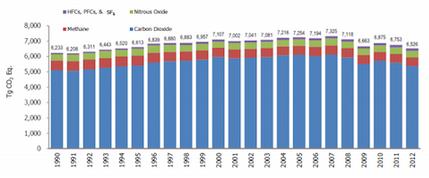
U.S. GHG Emissions At Lowest Levels In 20 Years. The
trends are encouraging in the USA, but any drop in carbon pollution
here has been more than offset by spiking greenhouse gas emissions in
China, India and other rapidly developing nations. Here's a clip from
Climate Central: "
U.S.
greenhouse gas emissions declined 3.4 percent in 2012 from 2011, the
Environmental Protection Agency announced Tuesday. Those emissions are
down 10 percent from what they were in 2005, the EPA said, and are at
their lowest levels since 1994.
Most of the decline came from reductions in energy consumption,
increased fuel efficiency of cars and other types of transportation, and
a shift to natural gas from coal in fueling power plants, the EPA said in a statement..."
Graphic credit above: "U.S. greenhouse gas emissions per year since 1990, broken down by type of gas." Credit: EPA.
Analysis: How The Media Covered The U.N. Climate Reports In Three Charts. Are we losing interest or avoiding the subject altogether? Here's an excerpt from Media Matters: "...A
Media Matters analysis found that the major print and television
outlets devoted far less coverage to the most recent installment of the
IPCC report than the first two reports by Working Group 1 (WG1) and
Working Group 2 (WG2), which outlined the evidence that manmade climate
change is happening and having largely negative impacts, respectively.
The third report received only about a quarter (28 percent) of the
amount of coverage given to the first report..."
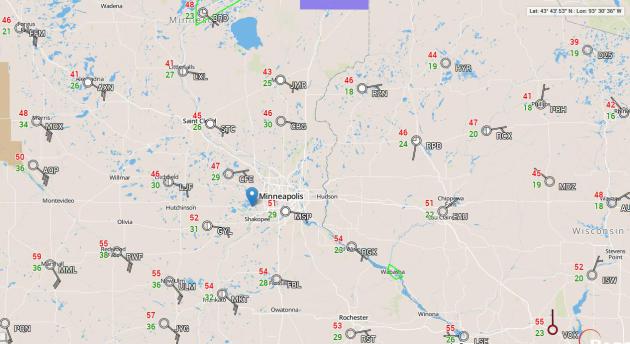

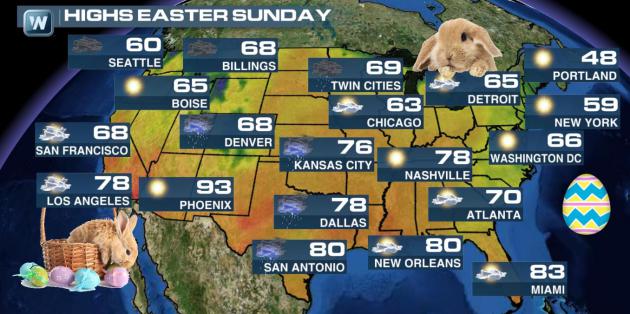
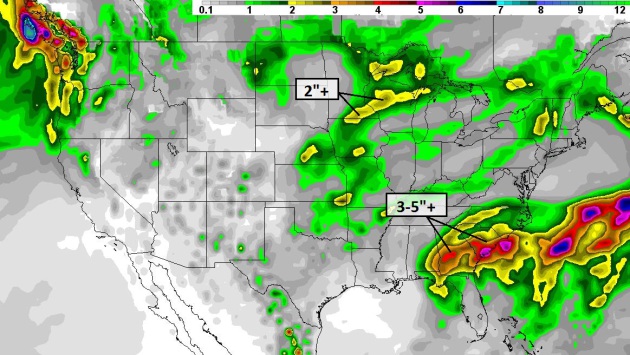
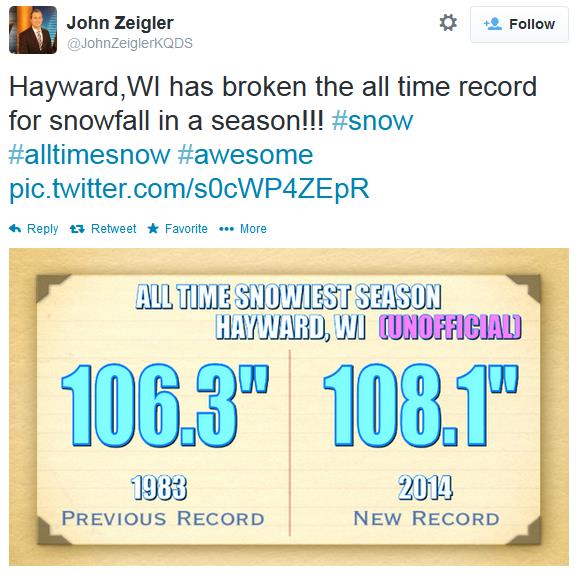
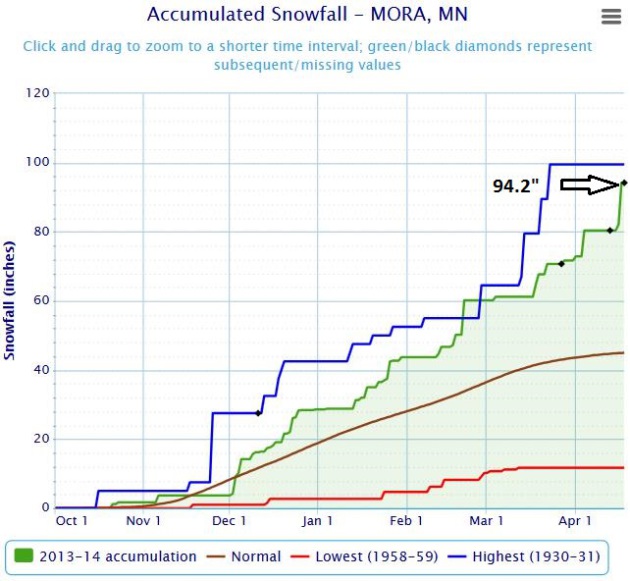
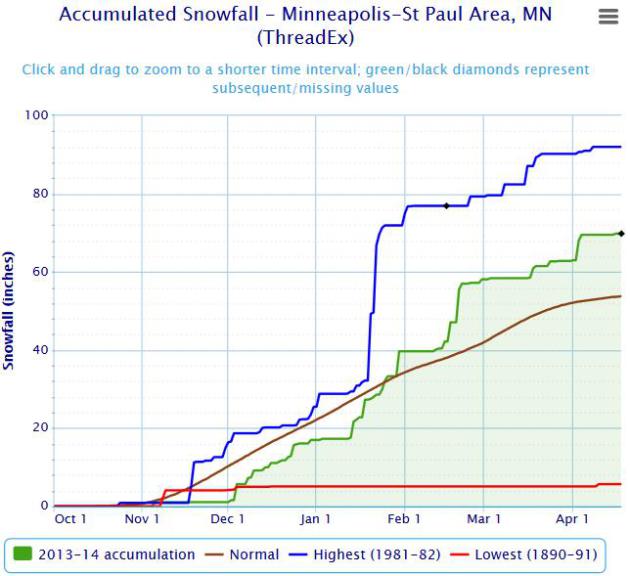
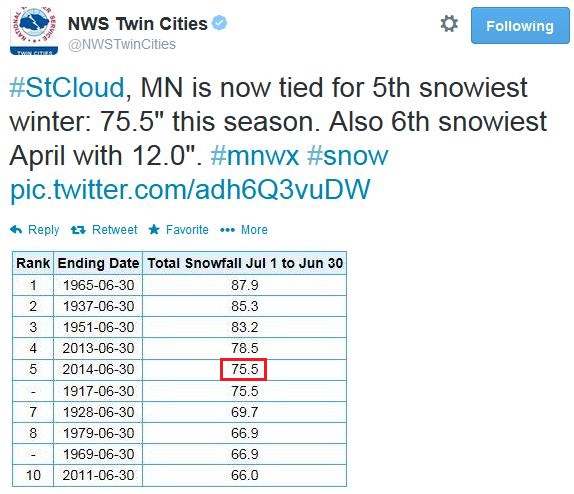
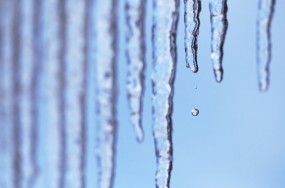

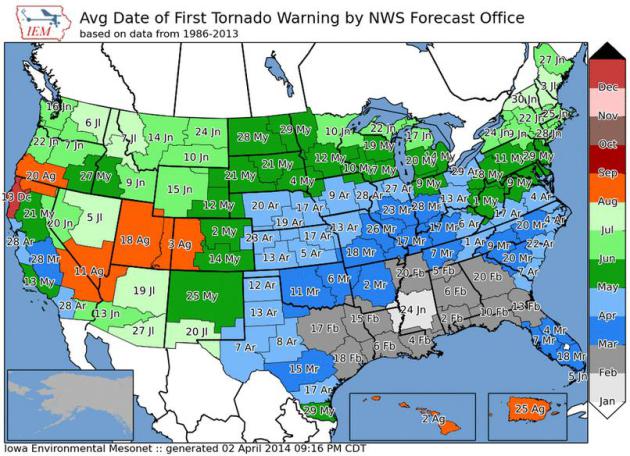
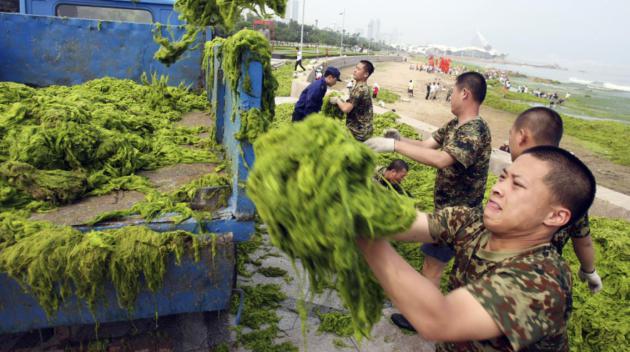


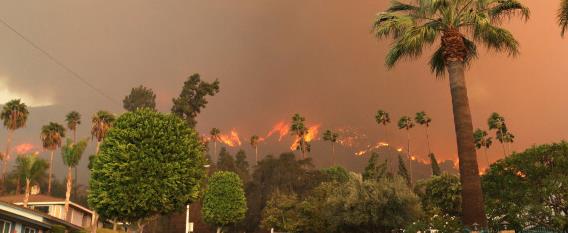
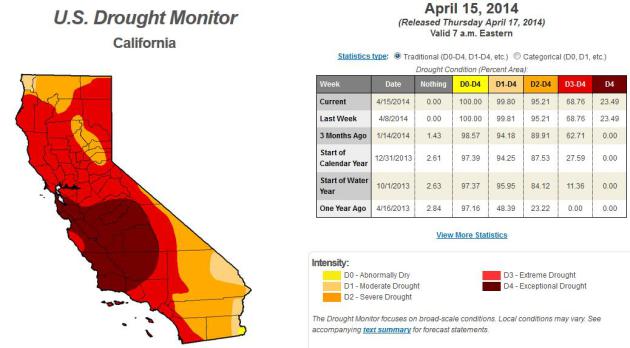


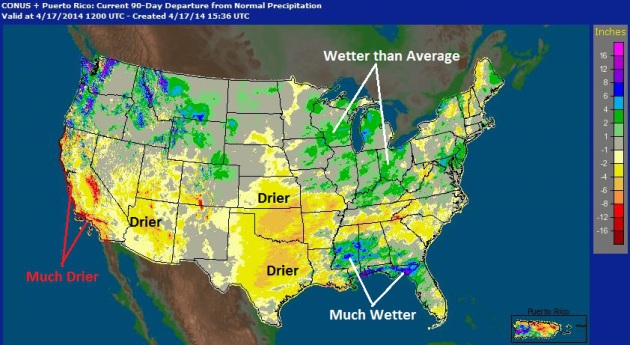



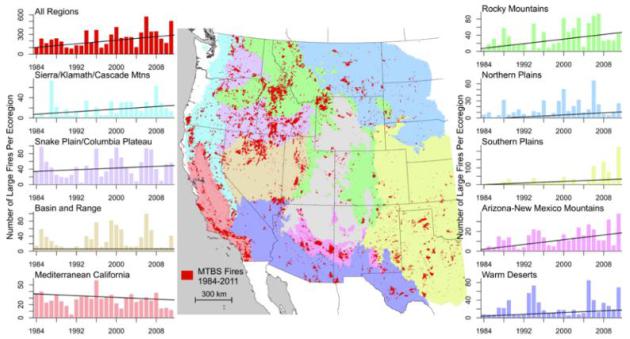



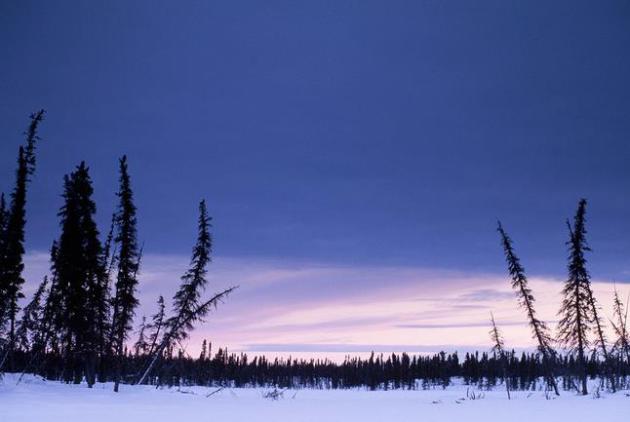

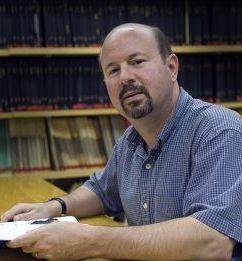
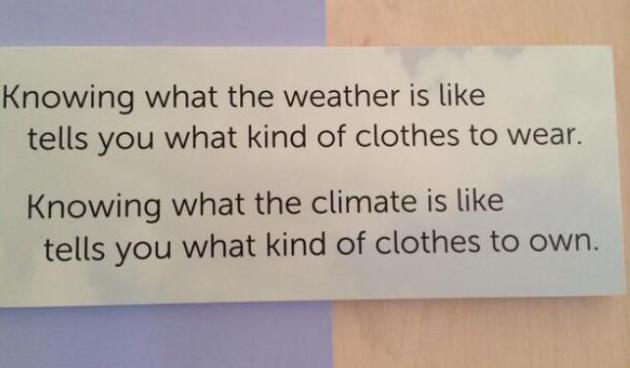
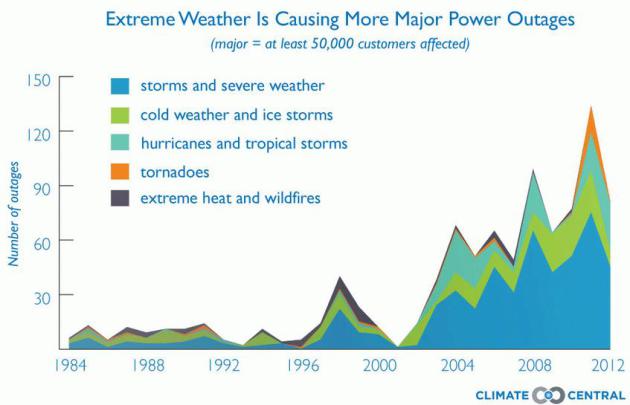

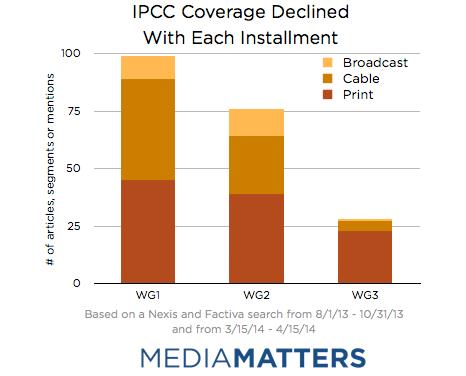
No comments:
Post a Comment